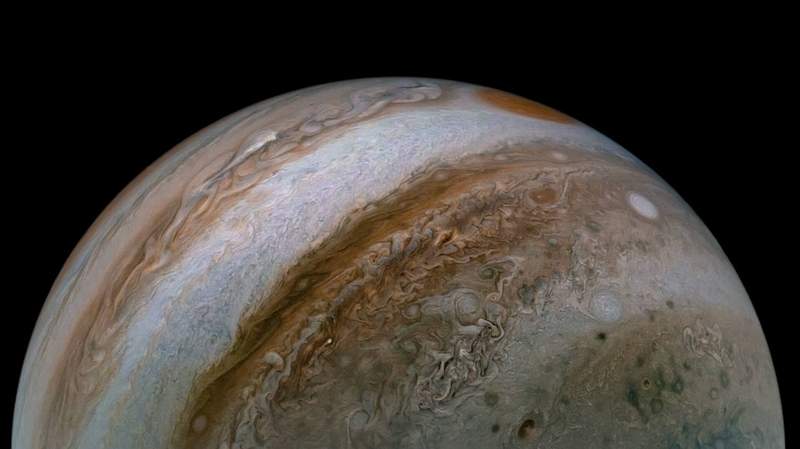
|
Like all gas giant planets, Jupiter is mostly atmosphere, with a smaller but extremely dense solid core to produce such heavy gravity. Jupiter is by far the largest planet in the Solar System, itself
composed of two-thirds of all planetary mass available, is so
heavy, so radiomagnetic, so geothermal that it is almost a star. Classified as a gas giant, being in size 1,318 times larger than the
Earth but weighing only 318 times more, so it is mostly gas, with a "small" solid core only slightly larger than the Earth. But such an atmosphere! Mostly hydrogen, helium, methane & ammonia; a swirl of gasses under such extreme conditions of temperture variation and gravitational pressure that it resembles an eternally boiling soup--lateral bands of dark & light clouds swirl across the face of Jupiter (winds of 1500 kph!), constantly changing place and size and color, except for that huge vortex known as the Great Red Spot, which defies all explanation. And that huge atmosphere is so ponderously heavy that as it is pressed down upon itself by the intense gravity it becomes denser, thicker, until it is liquid hydrogen, jellifying, and still deeper until it becomes liquid metal. There is probably no discernable "surface" under all that atmosphere, it all being just squeezed together into a muddy smear. And yet, for all that, Jupiter is considered the one other place in our Solar System where the probability for Life (hydrogen-based rather than carbon-based) is considered highest: because it generates heat, because the atmosphere resembles an ocean, and because it is so mysterious and full of extremes and surprises. COMPARISONS EARTH JUPITER Diameter/equator: 12,391 km 142,857 km Mass: 1 318.4 Gravity: 1 g 2.64 g Rotation Day: 24h 9h 50m 30s Orbital Year: 365 days 11.86y (4,332.59 days) Distance from sun: 147 m/152 km 740.9/815.7 million km Moons: 1 79 (or more)END DOC |
